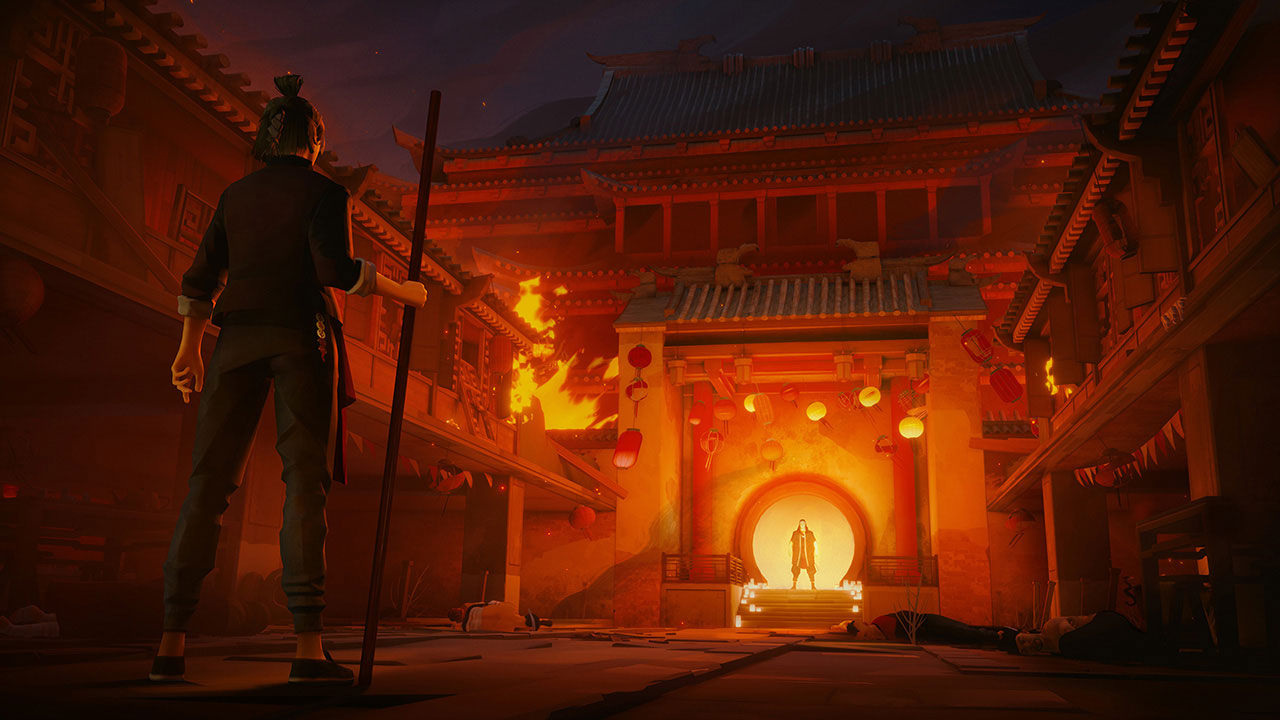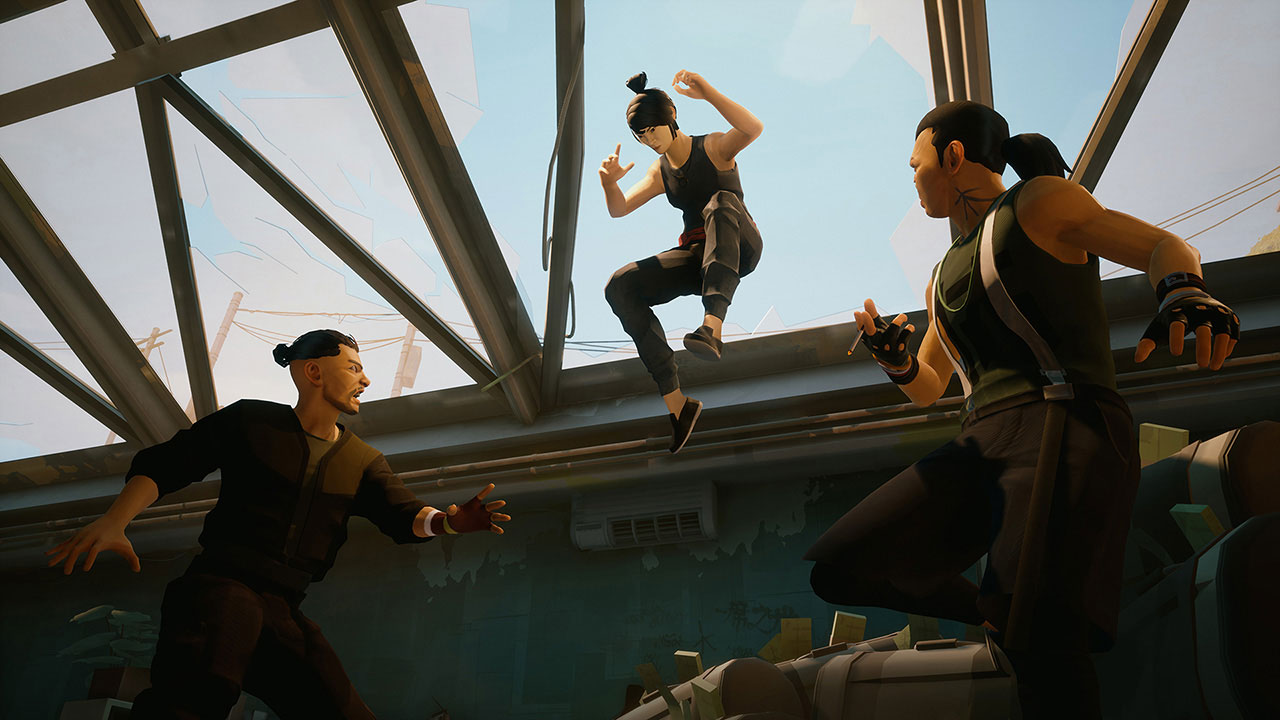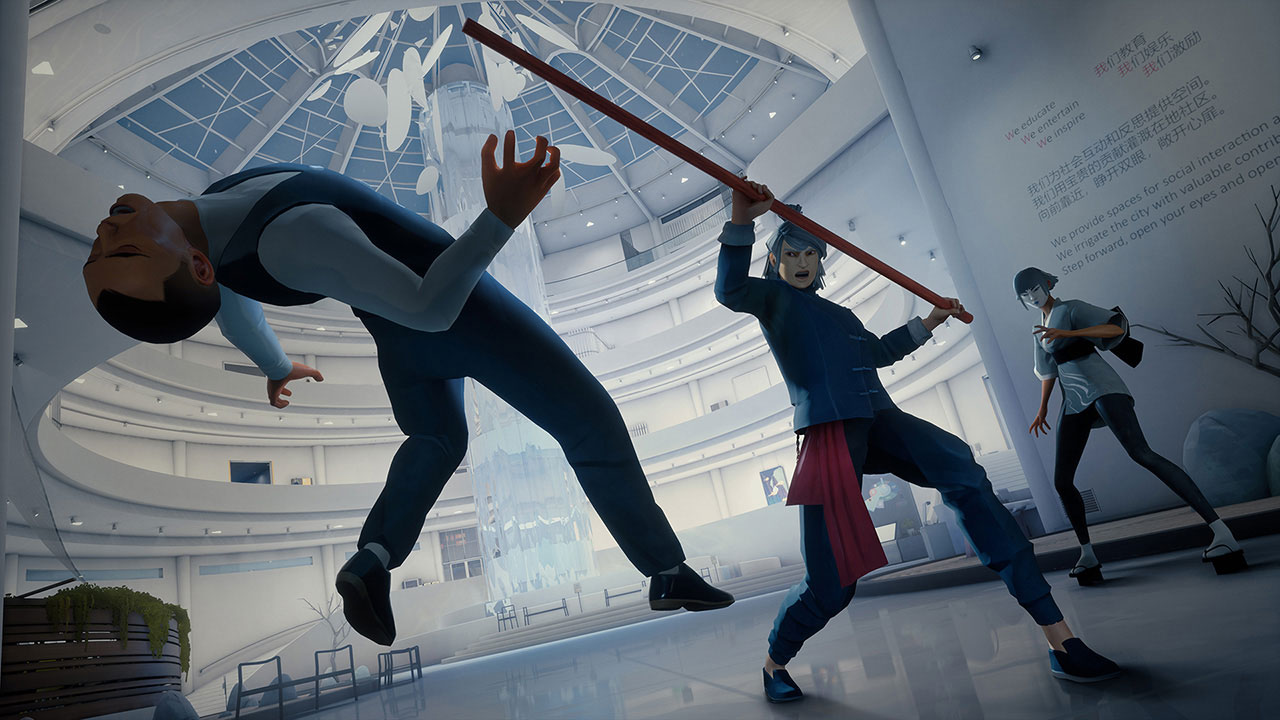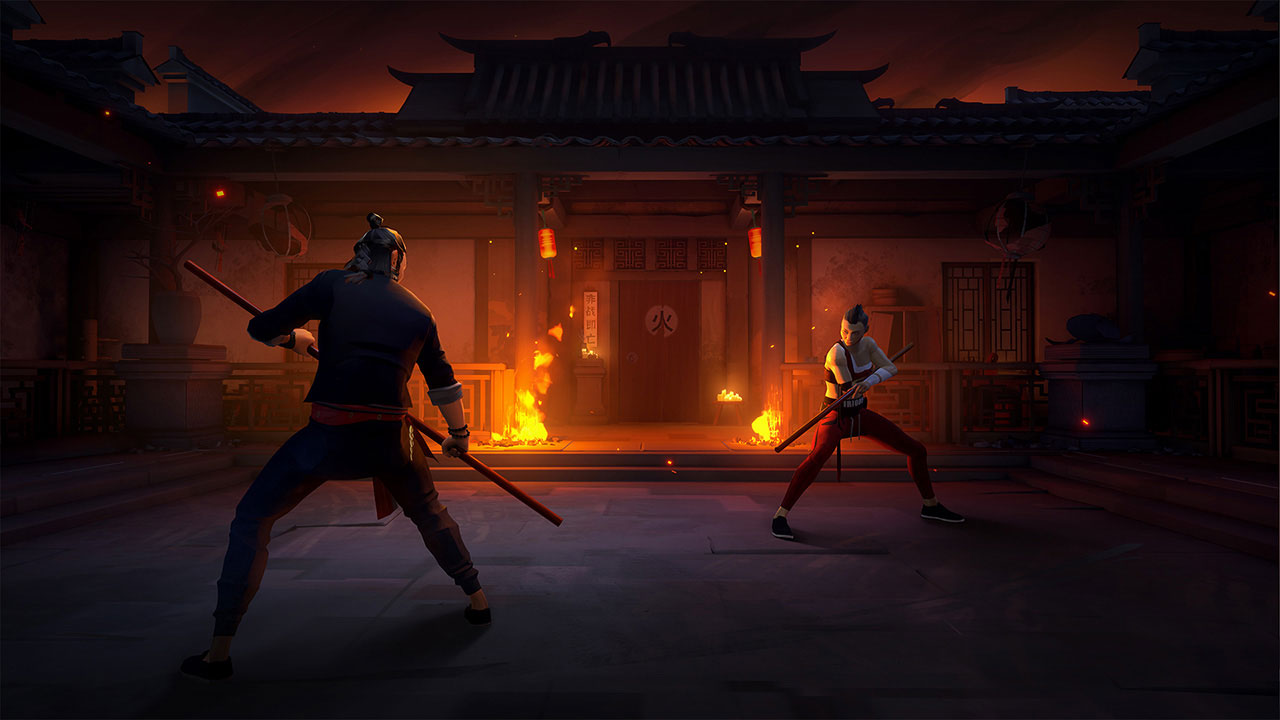My button combos are stronger than yours!
Some follow power, some follow honor, and some pursue vengeance. In Sifu, the name of the game is revenge. This action fighting game comes with an interesting twist at the very beginning; the first character you play is the very villain who starts the terrible chain of events.
Don’t worry, you are not the bad guy for long. It’s just enough to set up the story and to show you who you really are—the child of the Sifu the bad guy has just killed. The game lets you decide if you want to be a little girl or a little boy at this point, but it makes no real difference to the gameplay.
The story is simple and effective. Pride, betrayal, arrogance, cruelty, and mercilessness are all ingredients for a fine revenge stew. It’s also a familiar theme from the grand days of Kung Fu theater; the student thinks they have surpassed their master and wants to be the new Number One in town. After some years pass, the game introduces you to your grown self, having studied and practiced your skills and ready to go all Deadpool, working your way through the accomplices to your father’s murder and any of their goons you meet along the way, all to get to the betrayer. It is worth noting this game is rated M (17+) due to the graphic violence, and it is a fair rating.
I won’t go into all the details regarding the various controls used in this game, it would take too long. Suffice it to say, it is a good idea to spend some time reviewing the button mapping. There is something for each stick and button on the Joy-Con, and some attacks and combos require pressing two buttons at the same time.
There is another interesting feature of the game related to the controls and moves available—the opening credits which introduce you to various characters you will encounter. As each baddie is introduced, you see a shadowy version of the character and you’re allowed to spar with them while the game provides instruction on how to use certain attacks. Each baddie requires a different type of attack or combo move to finish them, and the intro scene/tutorial allows you to move on when you get the moves right. It is an interesting way to engage the player with the tutorial.
The tutorial teaches you that you need to keep your mind on the speed of the game, not your own speed. There is almost no latency between using a command and seeing it play out on the screen, but it is not the same as moving your own body in a real situation.
[I learned this lesson in sometimes painful ways in college. I studied Kung Fu for a couple years with my Sihing (a.k.a. Chuck). He shared many lessons he learned from his Sifu, most of them delivered quickly, some of them while I was lying on my back from the lesson which had been delivered about a half second before (yeah, Chuck was a black sash at the time).]The game shows off some impressive and realistic moves for the hero, including the use of weapons.
You get the normal array of parry, strike, kick, etc. You also get some throws, limited acrobatics, bone breaker moves, and finishing combos. The combat is fluid and quick so you will need to stay alert. The game provides a sort of stamina meter so you can pace yourself during combat. There are intermittent weapon drops even early on. I found you can pick up a lovely length of pipe and use it to great effect. It doesn’t come packaged with a bow, but it makes a very satisfying “ponk” when put to use.
As expected, when you accumulate enough experience points you can visit the skill tree to add new moves to your repertoire. The game is not subtle at all with this one; to access the skill tree, you walk up to a small tree in the courtyard of your home. A bit “nail on the head,” but the look and feel of the courtyard and the tree is very authentic. The skill tree does not force you to take a linear progression; you can acquire any skill as long as you have the points for it. This is very handy as you may get a better result based on which baddie you are going to face next.
The game will guide you with a world map, but it is not quite obvious what it is at the start of the game. Your adult life of revenge starts with you practicing with your wing chun dummy at home. There, a large window looks out on the city. This window is the world map which can take you to different areas so you can start beating your way through goons.
Sifu is not completely without flaws. There were a few points where I found you can move your character in a way which allows your body to run into the camera. This leaves you unable to see your body. This isn’t so bad, but it leaves the scene a little darker, making it a bit harder to discern details. It can also block visibility to obstacles, which could mean letting yourself get backed into a corner. Otherwise, the visuals are pretty good. The game doesn’t offer photo-realistic graphics, but it is not overly angular. The environmental elements provide a full and realistic world without looking forced.
The sound effects are very good, and the voice acting is sufficient.
Sifu does what a game in this genre should do—make you feel like an action hero directing how the movie plays out. At the time I’m writing this, Sifu can be purchased on the Nintendo site for $39.99. Given the good visuals and crisp feel of the action, as well as the replayability, it is a reasonable price point.
Review: Sifu (Nintendo Switch)
Great
As a whole, the Nintendo Switch version of Sifu is very good. The action fighting game has a reliable theme, good visual elements, interesting combat with smooth mechanics, a decent challenge level with a multitude of controls/moves, and a solid story.






